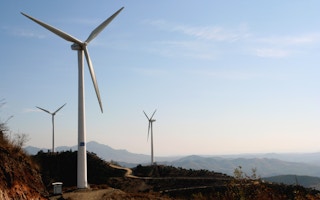The term “carbon neutral” is being increasingly slung around alongside phrases like “net zero emissions”.
From paint manufacturers and the livestock industry, to banks and developers, more corporations in diverse industries are announcing plans to go carbon neutral.
It’s a simple enough idea: the sum of all the greenhouse gases that you put into and take out of the atmosphere should balance out to zero. But in practice, it’s proven to be a confusing and divisive concept. Eco-Business breaks down the basics behind carbon neutrality.
Why go carbon neutral?
In theory, a carbon-neutral version of a product or service is better for the environment than its carbon-producing equivalent.
For organisations that understand the triple-bottom line (social, environmental and financial) impact of greenhouse gas emissions, that’s reason enough to work towards carbon neutrality.
For those that don’t, increasing consumer and voter concern with climate change may force their hand.
“The world has changed a lot in the past 10 years,” says Andrew Koscharsky, chief commercial officer of Singapore electricity retailer iSwitch, which offers its customers the option of carbon-neutral electricity. “And we find that customers are much more interested in dealing with a sustainable retailer who offers clean energy.”
So who’s doing it?
Who isn’t? Airlines and event management companies were early movers into carbon neutrality, allowing their customers to add a small donation to their ticket to offset their individual carbon emissions.
No doubt spurred by the spread of “flygskam”, or flight-shaming, the international aviation industry will be formalising carbon neutrality through an offsetting marketplace in 2020.
But the practice is spreading farther and faster, with carbon neutral commitments by investment and pensions funds, the construction and agricultural sectors, technology giants like Google and Amazon and, of course, cities and nations.
Some of the more significant attempts at carbon neutrality have been made in electricity and transportation which, combined, make up almost half of global emissions, according to the Centre for Climate and Energy Solutions, a non-profit organisation forging practical solutions to climate change. As transport is increasingly electrified through battery or hydrogen-powered vehicles, electricity generation will play an even bigger role in decarbonisation.
How are they tackling their carbon footprint?
Because of the broad spectrum of activities that results in carbon emissions and the many pathways to tackle it, there’s no definitive answer to this question. In general, avoiding or reducing emissions by ending polluting activity or switching to less emissions-intensive alternatives is the first step.
A company might install energy-efficient equipment, source recycled materials, or sign a power-purchasing agreement to buy renewable energy. A country might use policy levers to regulate deforestation or mandate car emissions standards.
Whatever’s left is tackled through offsetting techniques that counteract unavoidable emissions through other activity, often by purchasing “carbon certificates” through schemes or markets. Sometimes, this is as simple as supporting land-use projects that soak up and sequester carbon. There is also the (very contentious) idea of direct carbon capture and storage as a possible future market.
What are carbon offsets?
Carbon offsets are a wild bazaar of competing schemes that use different systems to measure and value greenhouse gas-emitting and offsetting activities.
United Nations, country- and province-level, sectoral, commercial, International Organisation for Standardisation (ISO), Publicly Available Specifications (PAS), and non-governmental organisation (NGO) methodologies are some of the different accreditations available.
So, you might find certificates generated by energy-efficient stoves in Lesotho, mangrove conservation in Kenya, or using methane from a Thai palm oil plant for on-site electricity.
In Singapore, 95 per cent of electricity is generated from natural gas, a fossil fuel, due to the lack of renewable energy sources. Solar currently contributes to less than 1 per cent of its energy mix and, by consuming electricity, the vast majority of consumers are contributing to carbon emissions. iSwitch’s carbon offsets have gone towards supporting the replacement of polluting brown coal plants in China with wind energy.
Singapore also introduced a carbon tax in 2019 and has priced it at S$5 per tonne of greenhouse gas emissions from 2019 to 2023, with plans to increase it to between S$10 and S$15 per tonne by 2030.
Why don’t we just buy offsets for everything?
Offsetting has a rich history of dispute. As early as 2006, environmental activist and The Guardian columnist George Monbiot described offsetting as “pernicious and destructive nonsense…you cannot buy the survival of the planet”.
The practice has been likened to colonialism, with critics charging that it pays less developed countries to cease industrialisation and rely on an uncertain market for environmental systems services (while purchasers claim the credit). Offsets have also been compared to the medieval Catholic practice of “papal indulgences”—paying a price in order to get away with sins—while Greenpeace has described offsetting air travel as “jumbo-size greenwashing”.
Criticism and controversy extend to every aspect of offsetting: from intentionality; to modelling, recording and reporting; and whether a credible offset scheme is even possible. The NGO Carbon Market Watch has argued that offsets will need to be phased out and replaced by carbon taxes, and investigation journalism outfit ProPublica has questioned whether offsetting may actually be worse than doing nothing.
Is it all just greenwash?
Not necessarily.
Greenwashing—marketing tactics to attract environmentally-conscious dollars—is a big problem when it comes to claims of carbon neutrality. Climate scholars like Steven Bernstein and Matthew Hoffman have also pointed out the “fractal carbon trap”, in which piecemeal attempts at decarbonisation (by an individual or a business) may “actually make it harder for larger systems to breach that threshold (for true emissions reductions)”.
The best practice is always to avoid or reduce carbon emissions in the first place.
But in some cases, where sustainability can only be approached (with current technology, at least) and not achieved, it may be appropriate to balance out emissions with a carbon-neutral approach. Air travel, for example, can be reduced, but will inevitably continue to emit greenhouse gases until alternative fuels or electrification can be achieved.
And in Singapore, where the amount of land or roof area for solar panels is limited, there’s “little choice but to go internationally to source voluntary carbon credits”, says Koscharsky. Voluntary carbon credits are purchased by individuals and organisations on a voluntary basis to compensate for their greenhouse gas emissions.
Ultimately, consumers need to look beyond the label and be satisfied with the impact made by a carbon-neutral product.
They may ask companies about their carbon-neutral certification schemes and the projects the schemes support, as well as examine the companies’ wider operating model.













